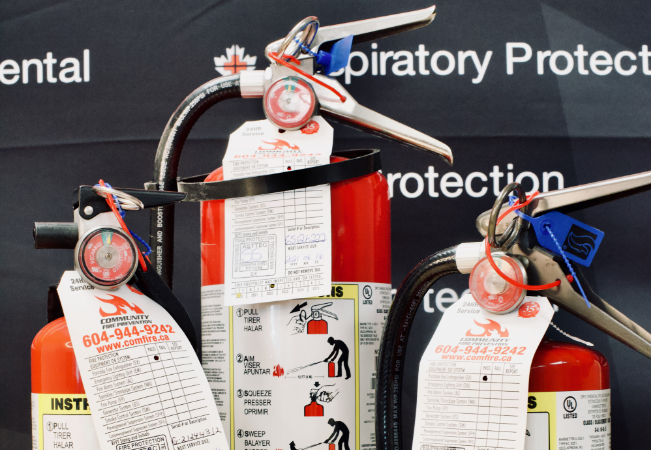Types & Sizes of Fire Extinguishers
Before buying a fire extinguisher for the office, it is important to first understand the potential fire risks the building poses to determine which type and size of fire extinguisher you need to buy. It is also important to know which fire extinguisher class is the best fit for your particular needs.
The fire extinguisher class designates which type of fires they are designed to extinguish. Some of the most common classes include:
- Class A—Fires caused by ordinary combustible products, such as wood, paper, plastic, and fabric.
- Class B—Fires involving flammable liquids or gasses like gasoline, oil, propane, and kerosene.
- Class C—Fires that involve electrical wiring and pose a threat of electrocution.
How to Determine Fire Extinguisher Size & Placement
The fire hazard level of a building determines how closely fire extinguishers of a certain size must be placed together. Some of the different fire hazard levels include:
Light Fire Hazard
Schools, churches, offices, and hotels are considered light hazard buildings. These types of buildings that need class A fire extinguishers should use 2A or larger fire extinguishers with a maximum distance of 75 feet between them.
If the building needs a class B fire extinguisher, 10B extinguishers should be placed about 50 feet or less apart and 5B extinguishers should be placed 30 feet or less apart.
Ordinary Fire Hazard
Buildings with ordinary fire risks often include fabric stores, dry cleaners, post offices, hardware stores, and parking garages. For these buildings, flammable materials will sit closely together, and ignition sources may or may not be present. These types of buildings will most frequently have class A hazards and use 2A fire extinguishers with a maximum of 75 feet between them.
If the building has class B hazards, 20B extinguishers should be positioned 50 feet or less apart, while 10B extinguishers should be placed 30 feet or less apart.
Extra Fire Hazard
Buildings such as furniture upholstery shops, assembly plants, and plastic processing factories tend to have a higher quantity of combustible contents, increasing the risk of fire. Any buildings in this category with class A hazards should use 4A or larger extinguishers with a maximum of 75 feet between them.
If the building has class B hazards, 80B extinguishers should be placed 50 feet or less apart and 40B extinguishers should be placed 30 feet or less apart.
If you would like to learn more about how many fire extinguishers a building needs, or if you are interested in fire protection products, please contact EFAS at 604-294-EFAS or toll free at 1-833-294-EFAS or by filling out a contact form on our website.

